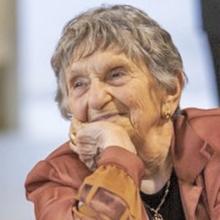Features
Shindico celebrating 50th anniversary this year – the Sandy Shindleman story
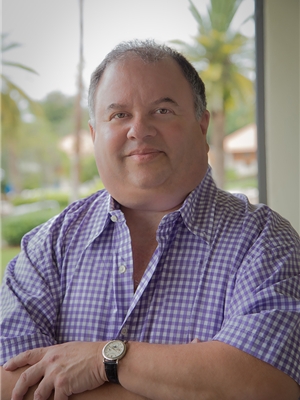
By BERNIE BELLAN Anyone who has ever driven through Winnipeg is bound to have noted the very many buildings – including strip malls, shopping centres, office buildings, and apartment buildings, that bear the name “Shindico”.
This year marks the 50th anniversary of the founding of Shindico. While its name may be familiar to most Winnipeggers, there’s not a lot that’s been written about how Shindico came to be.
Recently I had the chance to speak with Shindico founder Sandy Shindleman who, now 68, started Shindico when he was only 18.
Anyone who knows Sandy is familiar with his wry wit – and often self-deprecating style. In many ways his story is similar to the stories of many other self-made entrepreneurs within Winnipeg’s Jewish community.
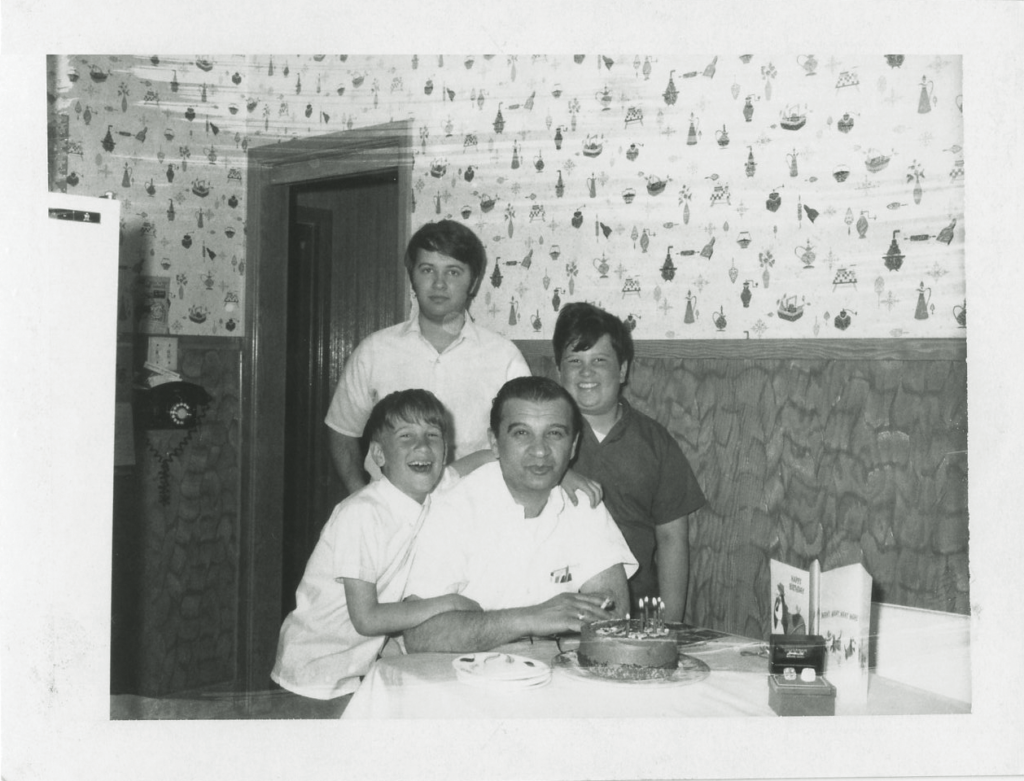
Born in a small town – in this case Portage la Prairie, Sandy was one of three brothers, (the others being Robert and Daniel). The brothers’ parents, Eddie and Claire (née Abells), are both deceased, Eddie having died in 1998, while Claire died in 2019. Eddie’s brother Jack, who worked with Eddie in the grocery store that Eddie owned in Portage (known as Greenberg’s Grocery), passed away in 2020.
Eddie Shindleman’s own father came to Canada in 1912 – from Ukraine (which was then part of Russia, Sandy reminded me.) Claire’s parents were from Belarus. Like many other Jewish immigrants, Sandy’s grandfather went into the cattle business – which Eddie Shindleman remained very much involved in, operating an abattoir (slaughterhouse) in Portage for many years.
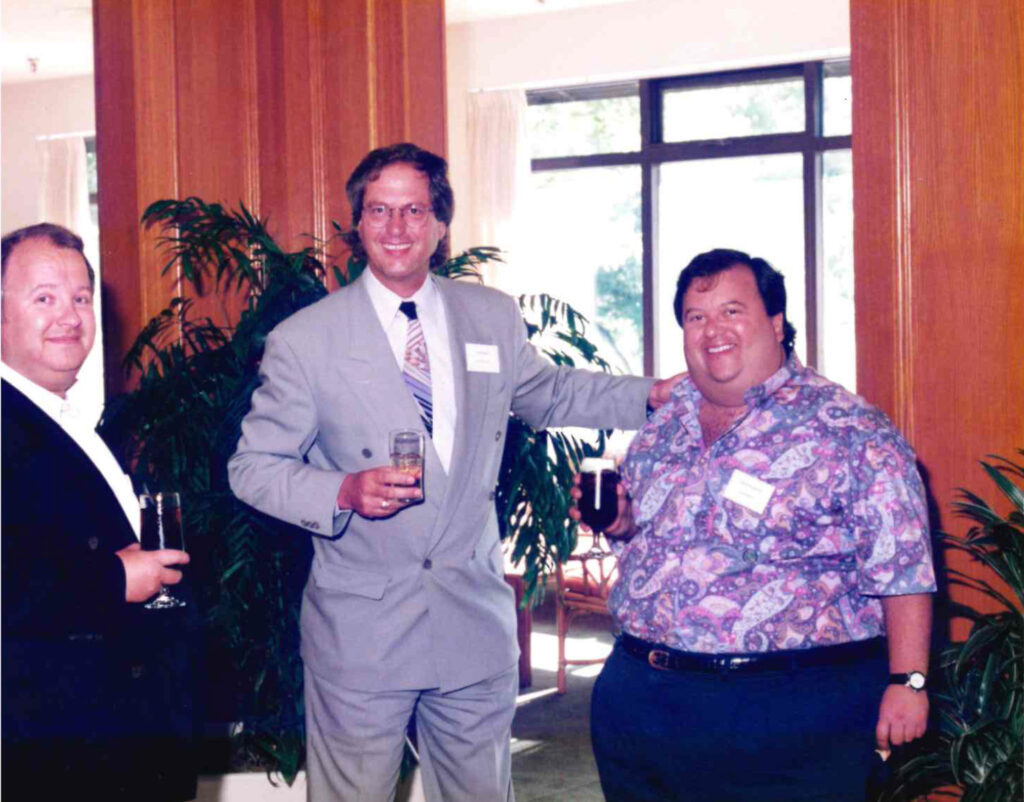
Sandy recalls his years growing up in Portage with fondness. There were about “25-35 Jewish families in Portage,” he recalls, many of whom had arrived there after World War II.
The grocery store that his father ran was actually purchased from Eddie Shindleman’s brother-in-law in 1967. Prior to that Eddie had managed the store. As well, Claire and her brother owned a motel in Portage, the “Westgate Inn,” which remained owned by the Shindleman family until this month.
I asked Sandy about the spelling of the name “Shindleman.”
Shouldn’t it be spelled “Shindelman,” I wondered?
His father misspelled it, Sandy said. It should have been “Shindelman,” not “Shindleman.” I asked whether “shindel” meant something in Yiddish. He answered that the family thought it meant “roofer,” but when I checked, the word “shindle” actually means scissors in Yiddish.
While Sandy did work some in the family grocery store, he also had occasion to help his father with the abattoir – which leads to a great story I’d first heard Sandy tell back in 2018, when I had invited him to speak to a group that I had helped start at the Rady JCC (along with Tamar Barr), known as the Jewish Business Network.
The story of the bull and “old man Schweitzer”
When I spoke to Sandy again recently, I invited him to repeat that story because it was both funny – and insightful.
The story goes like this: “I was 14 years old. The store was open till nine o’clock on Friday.” One Friday, on a June evening, after the store had closed Sandy’s father asked Sandy to go out to a farm owned by someone Sandy knew only as “old man Schweitzer.” (He never did find out Schweitzer’s first name, he told me.)
Schweitzer lived on an 80 acreage farm, Sandy continued, but he didn’t grow anything. He didn’t even have any cattle or chickens. All that he had was a bull and he wanted to sell his bull to Eddie Shindleman.
But old man Schweitzer didn’t drive. He didn’t own a truck. All that he owned was a tractor, Sandy said.
“He drove into town and he shopped at my dad’s store on a tractor because you didn’t need a driver’s license to drive a tractor. And as far as I know, you still don’t. But the tractor was open – like it didn’t have a closed cap.”
Now, at the time, Sandy was only 14 years old. Here he was, being asked to drive out to a farm – and pick up a bull. He said that he already knew how to drive a truck (even though he wasn’t legally supposed to be able to do that), so he went to Schweitzer’s farm in a five-ton truck, along with a hired hand who worked in the abattoir.
Eddie had given Sandy a blank cheque to take with him. Eddie had told Sandy to offer Schweitzer a fair price for the bull and not to try and take advantage of him. Sandy said he looked the bull up and down and offered Schweitzer $420 – which Schweitzer accepted.
So, Sandy and the hired hand loaded the bull on to the truck – which was quite a job, since it turned out the bull weighed 1400 pounds.
It was past dark when Sandy got back to Portage. “I drove by the store. My dad came out and climbed up on the truck and looked at the bull. And he said, ‘How much did you pay for it?’ I said ‘$420.’
“And he didn’t say good job, bad job, nothing.”
Now, Sandy had thought that his father wanted the bull for slaughter, since it was June and Eddie was going to need a lot of ground beef tor the upcoming Portage fair. But when Eddie took a look at the size of the bull, he realized it was too big for him to slaughter. “It would have broken the hoist,” Sandy explained.
Instead, Eddie decided to ship the bull to Burns Meats in Winnipeg.
“We had a special relationship with Burns Meats,” Sandy explained. “We provided a lot of their kill on a weekly basis. And so they treated us well. And we always sold things dressed weight. So it didn’t matter if the thing was full of water, it was dressed weight on the rail.”
Another week went by, and Burns Meats had sent a cheque for the bull. It was for $1,000.
Eddie didn’t say anything immediately when he saw how much the cheque was for.
Sandy said though, that later that day, when “there’s a lull in the store at six o’clock – when everyone’s eating dinner…my dad said, ‘What did you think of the bull sale?’ I said, ‘Well, I think I should quit school. I’ll buy a bull or two a week. And I’ll make more than you’re making standing here in the store.’
“ ‘Yeah.’ he said, ‘Could you have bought it for $350?’ I said, ‘Should I have?’
“He said, ‘no.’ He said, ‘What if old man Schweitzer didn’t take your offer and shipped the bull himself?'”
Eddie did some figuring how much it would have cost Schweitzer to ship the bull and came to the conclusion that Schweitzer would have “got about $780, not $420.”
So he told Sandy to go back to Schweitzer’s and write him another cheque for $400.
Sandy said that when he went back to Schweitzer’s, “I didn’t know that old man Schweitzer had hair because I’d never seen him without” the white hard hat he always wore.
But, he said to Schweitzer: ” ‘Mr. Schweitzer, I made a mistake on the bull. I misjudged the weight. And I have a check here for you.’ And I slid the check across his round table.”
Schweitzer though, said that instead of accepting the cheque he wanted to sign it right back over – and use the money instead as credit for groceries in Sandy’s father’s store.
But when Sandy returned to the store with cheque in hand, as he described it: “My dad is in the corner at the store, leaning over looking out the door, and I see he’s tearing up the check that I gave him. And I said, ‘Why are you doing that? He said, ‘Well, let Trudeau pay for half his groceries.’ “
The moral of the story though – and one that Sandy says has stuck with him throughout his business career, was “I realized that we were succeeding. These were customers. We succeeded by helping others succeed.”
Sandy ventures into real estate at age 18
How Sandy Shindleman came to be involved in real estate is another good story. As he tells it, there was a certain real estate salesman in Portage by the name of Danny Maxwell. According to Sandy, Maxwell told him he had to work only a couple of hours a week in order to make what was a pretty good living, so the idea of venturing into becoming a real estate salesperson had great appeal for someone who was still a teenager.
As he says, “it seemed like an easier way to make a living than what we were doing – standing in the store, carrying bags of flour, sacks of potatoes and cutting meats, et cetera – and kind of being stuck in one place. So, it seemed to me that that was something that should be explored.”
Sandy wrote the real estate licensing exam while he was still in high school. The exam was proctored by the Yellowquill junior high school principal (which was, by the way, not the junior high school Sandy attended).
With real estate license in hand, Sandy decided to make the big move to Winnipeg – on his own.
His first sale, he says, came courtesy of Zivey Chudnow, who owned a building in the Inkster Industrial Park (at 11 Plymouth; it’s now an Amazon warehouse) that he wanted to sell.
Sandy explains that he got to know Zivey when Sandy was only five years old and “used to shag golf balls for him” in Clear Lake.
But, that first successful foray into the real estate business did not lead to a whole series of other successes. As Sandy notes, “after that, I couldn’t make another sale because who’s going to buy anything from an 18-year-old farmer who doesn’t know anything about real estate? In commercial real estate, your buyer knows more than you and the seller knows more than you, but to sell a house, you know, what do I know about a house? I lived in a house. That was about the extent of it.”
So, he thought he might have better luck trying to sell farms. After all, he grew up in Portage and knew a lot about farms. That, too, didn’t pan out: “I wasn’t that successful selling farms. I put an ad in the paper to attract buyers and I tried to sell farms,” but without any success.
Instead, he decided to try his luck at buying some properties himself. “I bought some commercial buildings in Winnipeg and Portage – old buildings, you know, two suites upstairs that shared a bathroom and, you know, old grocery stores that were junk. One of them is still standing, 618 Saskatchewan Avenue West. The other ones aren’t. They fell down, I imagine.”
Things started to change for the better though when Sandy (who, by this time was joined by his older brother Robert) saw an empty Co-op store at 1068 Henderson Highway. Next to it, he says, were “a library, car wash, a Dairy Queen, and a gas bar.” The Co-op owned everything, and Sandy decided to make an offer to purchase what is now known as Rossmere Plaza from the Co-op, which was accepted.
Shindico begins a long and successful relationship with the Akman family
The purchase was completed with the Akman family, and the project was managed and run by Shindico (Sandy says the development was originally built by the Simkin family in the 1960s.) For Sandy, making that first major acquisition proved to be the beginning of a long relationship with the Akman family – something that eventually ended with Shindico acquiring Akman Management in 2023 from Danny Akman.
It was not long after that Sandy saw another opportunity when an empty Loblaws store on Pembina Highway was also for sale. As he says, it was around 1982, and the market for retail was “dead… There were a lot of experienced people that did office leasing, industrial, land, and apartments But retail – there was no glamour in that, so it wasn’t crowded.”
I asked how he financed those early acquisitions? Sandy explained that there were a lot of trust companies at the time – almost all of which have disappeared, but they were willing to lend him money. His approach, he noted – and it’s been his approach throughout his business career, he said, is to “work backwards. I find out how much rent something could produce. And then how much would I have to spend to get that rent?
“Do I have to build a building? Do I have to renovate the building and buy the building? And would the rent allow me to borrow most of the money? Then I would know how much I could pay for it.”
In addition to the trust companies, there were a lot of other “small lending institutions” around that time, he said. Lending “was a competitive business” and Shindico was forging a reputation as a prudent manager with a sophisticated leasing platform, attractive to market tenants. Sandy noted, for instance, that in the early years a lot of the properties Shindico developed were formerly gas stations because gas stations were “closing at that time. The lots were too small for the kinds of uses that they (service stations) have now.”
Sandy also pointed out that a lot of the over 180 properties that Shindico has owned in Canada and the United States over the years, have had the same tenants, such as Domino’s Pizza and Macs Milk Stores. Shindico still owns and operates over 160 properties in Canada and the United States, he added.
But, as Shindico grew, it began to branch into other areas of real estate beyond strip malls. Later on in its growth, Shindico also began Big Box development with companies, such as Walmart, Best Buy, Costco, Real Canadian Superstore, Ashley Furniture, Sobeys, and Safeway. Shindico has also been active in the Tenant Representation business, finding suitable spaces for business like Sobeys, Starbucks, Boston Pizza, Popeyes Chicken and several more. Examples include Grant Park Festival and Grant Park Pavilions (on Taylor Avenue), which are continually expanding. Shindico’s most recent success has been to bring Costco to its Westport development in Winnipeg. This is a much needed fourth store in Winnipeg and will serve all of Western Manitoba, and bring an exciting mixed use development to the area.
A key milestone for Shindico was diversifying into the acquisition and management of apartment buildings in 1984 when it purchased: Number One Evergreen Place – where Sandy and his wife Diane lived for a time.

More recently Shindico has developed purpose built apartment buildings, starting with the Taylor Claire on Taylor Avenue (named for the Shindleman brothers’ mother), followed soon thereafter by the Taylor Lee (named after their good friend and contractor, Robbie Lee) just down the street. Sandy says there will be more apartment buildings on Taylor Avenue in the future.
I asked him why Shindico waited so long before it began moving into the building of apartment buildings? He answered that “I didn’t have the money. You need a lot of money. You know, you’re not pre-leasing them. I can’t get you to sign a lease for three years from now.”
Always cautious in his ventures, Sandy said that for years he also had wanted to get into the personal storage business. “I wanted to be in personal storage probably for 25 years,” he said, “but I couldn’t figure out how to get the equity to build one because again, you don’t sign a lease three years in advance for your personal storage. You can’t pre-lease it. You have to learn that business and learn the market before you could” get into it. But Shindico now owns two personal storage locations – one in Transcona and one on Waverley.
Shindico’s many generous contributions to Winnipeg…and Portage
If I had wanted to write a story detailing all the many facets of Shindico’s business, however, this already very long story could have gone on for many more pages – and even though I suppose anyone reading it might seem like it’s really just a promotional piece for Shindico, I would argue that Shindico is one of Winnipeg’s truly great success stories that doesn’t seem to get very much recognition in the media.
Shindico and the Shindleman family are proud supporters of the communities in which they live, work, and play. Through generous donations to the Health Sciences Centre Foundation and investment in the Shindleman Aquatic Centre in Portage la Prairie, the Willow Tunnel at Assiniboine Park & Zoo, The Canadian Museum for Human Rights and Edward Shindleman Park in Winnipeg, they continue to support important initiatives that are close to their hearts and provide access to great spaces for all to enjoy.
Shindico has produced a very slick four-minute video, which can be viewed on YouTube and the Shindico website, that highlights the tremendous growth that the company has undergone in its 50 years of existence, but my interest in writing stories that have a business component is to try and shy away from analyzing financial aspects that might make one business more successful than another. Instead, I’ve always been more interested in individuals’ personal stories – and what made them tick.
Sandy’s trip to Russia in 1991 – when Russia was in total upheaval
Since Sandy Shindleman is such a great story teller (which I first learned when I heard him at that Jewish Business Network meeting eight years ago), when I spoke to him for this story I asked him to repeat a story he had told about a trip he took to Russia back in 1991.
Sandy has often been called upon to give lectures about commercial real estate in a great many different cities, but it was that trip to Russia which might be the most memorable of any of his many trips.
Readers might recall that 1991 was one of the most turbulent years in Russian history. Mikhael Gorbachev, who was Soviet President and General Secretary of the Communist Party at the time, had announced that there were was to be a free election in what was then still the Soviet Union, but chaos was descending upon Russia as old-line Communists were reluctant to cede power and the pro-democracy forces, led by Boris Yeltsin, were anxious to democratize the country.
Sandy had been invited to give a lecture on commercial real estate by someone from within what was by then known as the Russian Federation (although he says he’s not really clear where the invitation came from). He recalls taking a flight from Montreal to Paris, then on to Moscow, where he was joined by two other guys who were also supposed to be giving lectures on real estate.
But, as Sandy describes it, “I landed and the other two men were there. And I didn’t realize that they were both former CIA guys, because they spoke Russian.”
All hell was breaking loose in Moscow at the time, but Sandy says he was totally oblivious to what was happening. “I didn’t know what was going on. There’s no television, there’s no Tom Brokaw explaining to us what’s going on. Bernie Bellan isn’t writing about it. There’s just a bunch of people running around, and we really didn’t know what we were looking at.”
I asked him whether he ended up giving a lecture? Sandy says he did, but “we were supposed to have simultaneous translation, which we didn’t. We had a guy – Vladimir, who was supposed to help,” but Sandy says he doesn’t really know what Vladimir’s role was.
Shindico moves into the construction business
Getting back to the current moment though, given Shindico’s tremendous growth, I wondered what might lie ahead for Sandy Shindleman. He says that the management of the company is in excellent hands, with Alex Akman now Chief Operating Officer, Leanne Fontaine, Chief Financial Officer, and Justin Zarnowski, In-House Legal Counsel.
That brought me back to asking about Shindico’s acquisition of Akman Management in 2023. According to a press release issued at the time, Akman Management portfolio consisted of “1,200,000 square feet of property across 1,000 multifamily units and 18 commercial assets.” The integration of Akman Management resulted in “a 42% increase in staff at the Shindico Group of companies”, and Sandy says “it was great to acquire a like-minded family style company made up of folks that you would want to have lunch with”.
The year 2023 was also an exciting one for Shindico in that it marked the founding of SNR Construction Ltd, a general contracting division in the Shindico Group of Companies. SNR recently completed an 84,000 square foot warehouse for Shindico in the St. Boniface Industrial Park, and is working on a wide array of multi family and retail projects across the Shindico portfolio.
Considering how successful Shindico has been, I wondered whether Sandy ever thought of taking Shindico public and allowing investors to buy stock in it?
Sandy says he’s not interested in going public, saying “we’re a family office, family business – Alex, Justin and Leanne and others. We’ve got a, a kind of a management group of at least a dozen… We’re just a small company…we can have the leverage of running real estate.”
By the way, Sandy’s brother Robert, Executive Vice President of the Shindico Group of Companies, is an important part of the organization, overseeing property development, operations, and management. Sandy’s wife, Diane, is also very involved in the businessm- as Executive Vice President, Finance. Their daughter, Annie, a graduate of Gray Academy, is currently enrolled in the Asper School of Business. “Perhaps, one day, my daughter might join us,” Sandy said, but in the meantime, as he says in the 50th anniversary Shindico video on YouTube, his goal for Shindico “for the next 50 years is supporting and leading all our professional management to grow.”
Features
Why Prepaid Cards Are the Last Refuge for Online Privacy in 2025

These days, it feels like no matter what you do online, someone’s watching. Shopping, streaming, betting, even signing up for something free—it’s all tracked. Everything you pay for with a normal card leaves a digital trail with your name on it. And in 2025, when we’re deep into a cashless economy, keeping anything private is getting harder by the day.
If you’re the kind of person who doesn’t want every little move tied to your identity, prepaid cards are one of the only real options left. They’re simple, easy to get, and still give you a way to spend online without throwing your info out there. One card in particular, Vanilla Visa, is one of the better picks because of how widely Vanilla Visa is accepted and how little personal info it needs.
Everything’s Online, and Everything’s Tracked
We used to pay for stuff with cash. Walk into a store, hand over some bills, leave. No names, no records. That’s gone now. Most stores won’t even take cash anymore, and the ones that do feel like the exception. The cashless economy is here whether we like it or not.
So what’s the problem? Every time you swipe or tap your card, or pay with your phone, someone’s logging it. Your bank saves the details. The store’s system saves it. And a lot of times, that data gets sold or shared. It can get used to target you with ads, track what you buy, where you go, and when you do it.
It’s not just companies either. Apps collect it. Hackers try to steal it. Some governments keep tabs too. And if you’re using the same card everywhere, it all gets connected pretty fast.
Why Prepaid Cards Still Matter
Prepaid cards are one of the only ways to break that chain. You go to a store, buy one with cash, and that’s it. No bank involved. No name. You just load it up and use it. And because Vanilla Visa is accepted on most major websites, you can use it just like any normal card.
You’re not giving out your real name or tying it to your main account. That means when you pay for something, it’s not showing up on your bank statement. It’s not getting saved under your profile. You’re basically cutting off the trail right there.
Why Vanilla Visa Stands Out
There are a few different prepaid card brands out there, but Vanilla Visa is probably the most popular. You can grab one at grocery stores, gas stations, pharmacies—almost anywhere. And once you’ve got it, you can use it on pretty much any site where Vanilla Visa is accepted.
No long setup. No personal info. You don’t need to register it under your name. You just pay, go online, and spend the amount that’s on the card. When it runs out, you toss it and move on. No trace.
This makes it great for anyone who wants to sign up for a site without attaching their real identity. People use it for online gaming, streaming, subscriptions, or just shopping without giving out their main card info.
The Good and the Bad
There are some solid upsides to using a prepaid card:
- You don’t need a bank account
- You don’t give out your name or address
- It’s easy to budget since you can’t spend more than you loaded
- Most major sites take them, especially where Vanilla Visa is accepted
But there are a few downsides too:
- You can’t reload the card. Once it’s empty, it’s done
- You can’t use it to get money out, like at an ATM
- Some cards have small fees or expiration dates, so don’t let them sit too long
- A few sites want a card tied to a name and billing address, which doesn’t work here
- If you lose it or someone steals the number, you’re probably not getting the money back
So yeah, prepaid cards aren’t perfect. But if privacy is the goal, they’re still one of the few things that actually help.
Real Ways People Use Them
Let’s say you’re trying out an online casino. You don’t want your bank seeing it. You don’t want it on your statement. You walk into a Walgreens, buy a Vanilla Visa with a hundred bucks in cash, then use it to make your deposit. Done. The casino sees a card, but not your name.
Or maybe you’re signing up for a new subscription. Could be a video platform, a magazine, whatever. You don’t want it auto-charging your main card every month or sharing your info with advertisers. Use a prepaid card, and it stays off the radar.
Even if you’re just buying something from a site you don’t totally trust, using a card that isn’t tied to your real money is a smart move.
Will These Cards Still Be Around?
That’s the thing people are starting to worry about. Some stores have started asking for ID when you buy higher-value prepaid cards. And there’s talk in some countries about requiring people to register cards before using them.
Governments don’t like anonymous money. Companies definitely don’t. There’s a chance that in the future, prepaid cards will be harder to get or come with new rules.
But for now, they still work. You can still walk into a store with cash and walk out with a prepaid card. And as long as Vanilla Visa is accepted at the places you shop, you’ve got a way to stay private.
Bottom Line
If you’re living in 2025 and trying to protect your privacy online, prepaid cards are one of the last easy options. The cashless economy makes it almost impossible to pay without leaving a record, but prepaid cards break that pattern. They don’t ask for your name. They don’t track your habits. And they don’t leave a trail if you use them right.
They won’t fix everything. They don’t keep you completely invisible. But they give you a level of control that’s hard to find now. In a world that wants to watch your every move, that still counts for something.
Features
Winkler nurse stands with Israel and the Jewish people
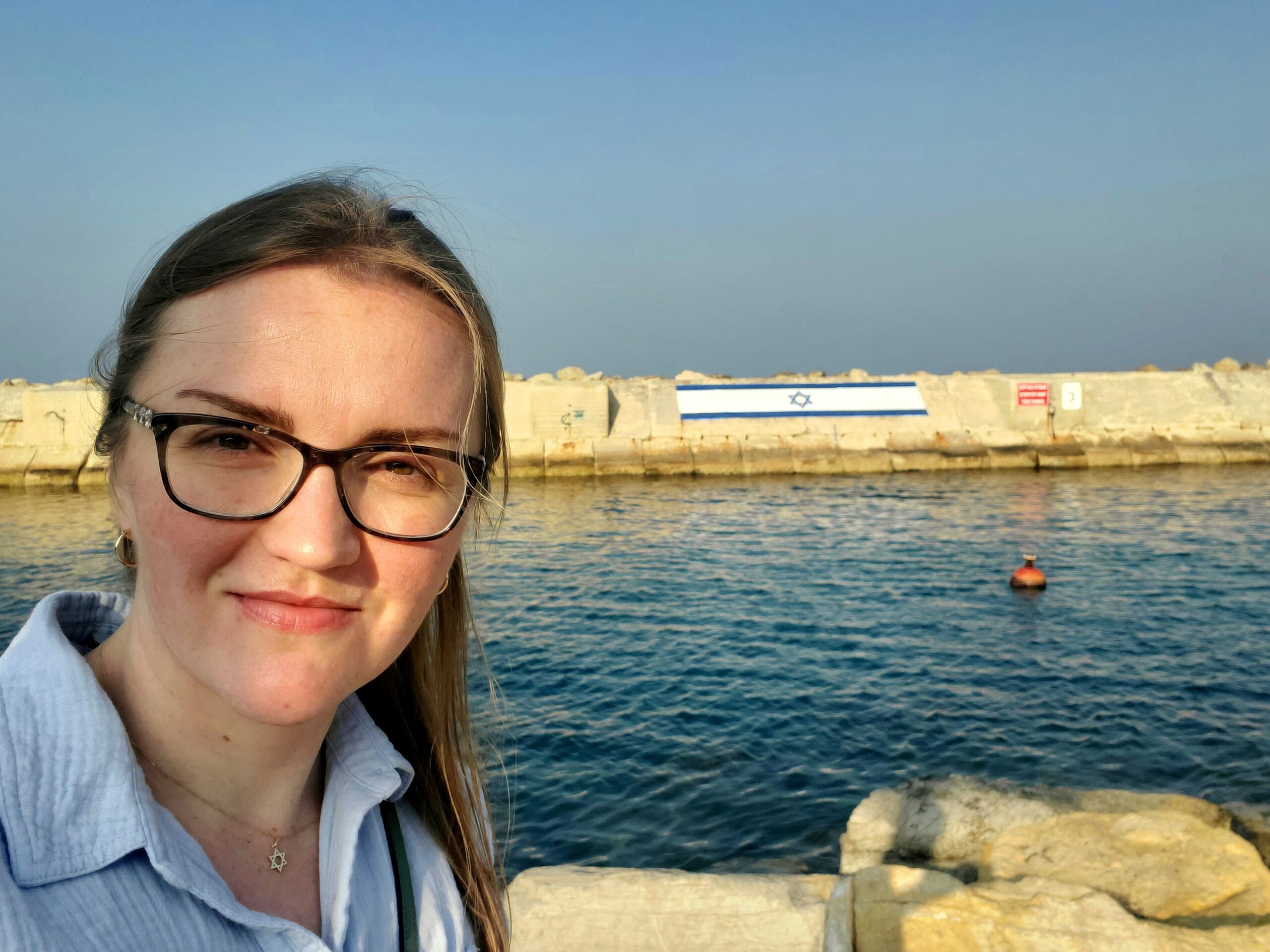
By MYRON LOVE Considering the great increase in anti-Semitic incidents in Canada over the past 20 months – and the passivity of government, federally, provincially and municipally, in the face of this what-should-be unacceptable criminal behaviour, many in our Jewish community may feel that we have been abandoned by our fellow citizens.
Polls regularly show that as many as 70% of Canadians support Israel – and there are many who have taken action. One such individual is Nelli Gerzen, a nurse at the Boundary Trails Health Centre (which serves the communities of Winkler and Morden in western Manitoba). Three times in the past 20 months, Gerzen has taken time off work to travel to Israel to support Israelis in their time of need.
I asked her what those around her thought of her trips to Israel. “My mother was worried when I went the first time (November 2023),” Gerzen responded, “but, like me, she has trust in the Lord. My friends and colleagues have gotten used to it.”
She also reports that she is part of a small group of fellow believers that meet online regularly and pray for Israel.
Gerzen is originally from Russia, but grew up in Germany. Her earliest exposure to the history of the Holocaust, she relates, was in Grade 9 – in Germany. “My history teacher in Germany in Grade 9 went into depth with the history of World War II and the Holocaust,” she recalls. “It is normal that all the teachers taught about the Holocaust but she put a lot of effort into teaching specifically this topic. We also got to watch a live interview with a Holocaust survivor.”
What she learned made a strong impression on her. “I have often asked myself what I would do if I were living in that era,” she says. “Would I have been willing to hide Jews in my home? Or risk my life to save others?”
Gerzen came to Canada in 2010 – at the age of 20. She received her nursing training here and has been working at Boundary Trails for the last three years.
“I believe in the G-d of Israel and that the Jews are his Chosen People,” she states. “We are living at a time of skyrocketing anti-Semitism. Many Jews are feeling vulnerable. I felt that I had to do something to help.”
Gerzen’s first trip to Israel was actually in 2014 when she signed onto a youth tour organized by a Christian group, Midnight Call, based in Switzerland. That initial visit left a strong impact. “That first visit changed my life,” she remembers. “I enjoyed having conversations with the Israelis. The bible for me came to life. Every stone seemed to have a story.”
She went on a second Midnight Call Missionaries tour of Israel in 2018. She went back again on her own in the spring of 2023. After October 7, she says, “I couldn’t sit at home. I had to do something.”
Thus, in November 2023, she went back to Israel, this time as a volunteer. She spent two weeks at Petach Tikvah cooking meals for Israelis displaced from the north and the south as well as IDF soldiers. She also spent a day with an Israeli friend delivering food to IDF soldiers stationed near Gaza. She notes that she wasn’t worried so close to the border.
“I trusted in the Lord,” she says. “It was a special feeling being able to help.”
Last November, she found herself at Kiryat Shmona (with whom our Jewish community has close ties), working for two weeks alongside volunteers from all over the world cooking for the IDF.
On one of her earlier visits, she recounts, a missile struck just a few metres from the kitchen where the volunteers were working. There was some damage – forcing closure for a few days while repairs were ongoing, but no injuries.
In January, she was back at Kiryat Shmona for another two weeks cooking for the IDF. She also helped deliver food to Metula on the northern border. This last time, she reports, there was a more upbeat atmosphere, “even though,” she notes, “the wounds are still fresh. It was quieter. There were no more missiles coming in.
“Israelis were really touched by the presence of so many of us volunteers. I only wish more Christians would stand up for Israel.
“It was really moving to hear people’s stories first-hand.”
She recounts the story of one Israeli she met at a Jerusalem market who fought in the Yom Kippur war of 1973, who was the only survivor of the tank he was in.
“This guy lost so much in his life, and he was standing there telling the story and smiling, just trying to live life again,” she says. “The people there are so heartbroken.”
Back home, she has been showing her support for Israel and the Jewish people by attending the weekly rallies on Kenaston in support of the hostages whenever she can.
She is looking forward to playing piano at Shalom Square during Folklorama.
Nelli Gerzen doesn’t know yet when she will be returning to Israel – but it is certain to be soon. “This is my chance to step up for the truth,” she concludes. “I know that supporting Israel is the right thing to do. When I am there, it feels like my heart is on fire.”
Features
Antisemitism in the Medical Profession in Canada
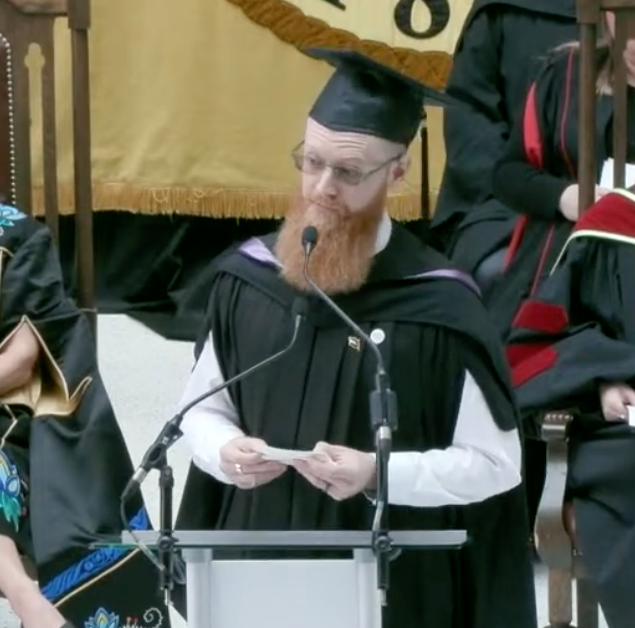
By HENRY SREBRNIK (June 27, 2025) Antisemitism in Canada now flourishes even where few would expect to confront it. Since the Hamas attack on Israel on October 7, 2023, there has been a resurgence of antisemitism noticeable in the world of healthcare.
When Israeli Gill Kazevman applied to medical school, and circulated his CV to physician mentors, their most consistent feedback was, “Do not mention anything relating to Israel,” he told National Post journalist Sharon Kirkey in an Aug. 10, 2024, story. As a student at the University of Toronto’s Temerty Faculty of Medicine, “I began to see all kinds of caricatures against Jews. I saw faculty members, people in power, people that I’m supposed to rely on, post horrible things against Jews, against Israelis,” he added. The faculty created a Senior Advisor on Antisemitism, Dr. Ayelet Kuper, who in a report released in 2022, confirmed widespread anti-Jewish hatred.
The Jewish Medical Association of Ontario (JMAO) conducted a 2024 survey of 944 Jewish doctors and medical students from across Canada. Two thirds of respondents were “concerned that antisemitic bias from peers or educators will negatively affect their careers.” Dr. Lisa Salomon, JMAO’s president, reported that at the University of Toronto medical school only 11 Jewish students were completing their first year of medical school out of a class of 291. The medical school in 1974 saw 46 Jews in a class of 218.
Also in Toronto, Hillel Ontario called on Toronto Metropolitan University to investigate Dr. Maher El-Masri, who has served as the director of the Daphne Cockwell School of Nursing, because, the group contended, he has “repeatedly engaged with and spread extreme, antisemitic, and deeply polarizing content on his social media account.”
The National Post’s Ari Blaff in an article on June 12, 2025 quoted social media posts from an account Hillel claimed belongs to Dr. Maher El-Masri, who has been the director of the Daphne Cockwell School of Nursing. One message concerned a post about Noa Marciano, an Israeli intelligence soldier abducted by Hamas on Oct. 7, 2023, who later died in captivity. “This is what is so scary about people like her,” the TMU professor wrote. “They look so normal and innocent, but they hide monstrous killers in their sick, brainwashed minds.” Israel, he asserted a day after the Hillel notice, “is a baby killer state. It always has been.”
The Quebec Jewish Physicians Association (AMJQ) is fighting antisemitism in that province. Montreal cardiologist Dr. Lior Bibas, who also teaches at Université de Montréal, co-founded the group in the weeks following the October 7 terrorist attack. They feel young doctors have been bearing the brunt of anti-Israel sentiment since then. “We heard that trainees were having a hard time,” he told Joel Ceausu of the Canadian Jewish News Feb. 3. “We saw a worsening of the situation and were hearing stories of trainees removed from study groups, others put on the defensive about what’s happening,” and some saw relationships with residents deteriorating very quickly.
Dr. Bibas thinks there are similarities with Ontario counterparts. “Trainees are getting the brunt of all this. Their entire training ecosystem — relationships with peers and physicians — has changed.” Whether anti-Zionist remarks, blaming Jews for Israel’s actions, or other behaviour, it can be debilitating in a grueling academic and career setting. The fear of retaliation is so strong, that some students were unwilling to report incidents, even anonymously.
Jewish physicians have now founded a national umbrella group, the Canadian Federation of Jewish Medical Associations (CFJMA), linking the provinces, and representing over 2,000 Jewish physicians and medical learners, advocating for their interests and promoting culturally safe care for Jewish patients. And “it’s really been nonstop, given that we have a lot of issues,” Dr. Bibas told me in a conversation June 17. “People have been feeling that there’s been a weaponization of health care against Israel.”
He stressed that health care should remain politically neutral – meetings are an inappropriate venue in which to talk about the war in Gaza, he stated, and “this will just lead to arguments.” Nor should doctors, nurses and hospital staff wear pins with Palestinian maps or flags. And no Jewish patient being wheeled into an operating room should see this “symbol of hate.”
On Jan. 6, a group of Montreal-area medical professionals walked off the job to protest outside Radio-Canada offices, calling for an arms embargo, ceasefire and medical boycotts of Israel. Those who could not attend were encouraged to wear pins and keffiyehs to work. When asked if such a walkout should be sanctioned, Quebec Health Minister Christian Dubé’s office had no comment. Neither did the Collège des médecins (CDM) that governs professional responsibilities. The leadership of many institutions have remained passive.
B’nai Brith Canada recently exposed a group channel, hosted on the social media platform Discord, in which Quebec students engaged in antisemitic, racist, misogynistic and homophobic rhetoric. More than 1,400 applicants to Quebec medical schools, as well as currently enrolled medical school students, were in the group, which was ostensibly set up to support students preparing for admission to Quebec’s four medical programs. “I saw it, and it’s vile,” remarked Dr. Bibas, noting how brazenly some of the commentators expressed themselves, using Islamist rhetoric and Nazi-era imagery, such as referring to Anne Frank as “the rat in the attic.”
Doctors Against Racism and Antisemitism (DARA) said in a statement, “These messages are the direct result of the inaction and prolonged silence of medical school and university leaders across Canada since October 7, 2023, in the face of the meteoric rise of antisemitism in their institutions. Silence is no longer an option. Quebec’s medical schools and universities must act immediately. These candidates must not be admitted to medical school.” DARA member Dr. Philip Berger stated that “there’s been a free flow, really, an avalanche of anti-Israel propaganda, relentlessly sliding into Canadian medical faculties and on university campuses.”
In Winnipeg, a valedictory speech delivered to the 2024 class of medical school students graduating from the Max Rady College of Medicine at the University of Manitoba on May 16, 2024 set off a storm of controversy, as reported by Bernie Bellan in this newspaper. It involved a strongly worded criticism of Israel by Dr. Gem Newman. “I call on my fellow graduates to oppose injustice -and violence — individual and systemic” in Palestine, “where Israel’s deliberate targeting of hospitals and other civilian infrastructure has led to more than 35,000 deaths and widespread famine and disease.” The newspaper noted that “loud cheers erupted at that point from among the students.”
The next day, the dean of the college, Dr. Peter Nickerson, issued a strongly worded criticism of Dr. Newman’s remarks. On Monday, May 20, Ernest Rady, who made a donation of $30 million to the University of Manitoba in 2016, and whose father, Max Rady, now has his name on the school, sent an email in response to Dr. Newman’s remarks.
“I write to you today because I was both hurt and appalled by the remarks the valedictorian, Gem Newman, gave at last week’s Max Rady College of Medicine convocation, and I was extremely disappointed in the University’s inadequate response. Newman’s speech not only dishonored the memory of my father, but also disrespected and disparaged Jewish people as a whole, including the Jewish students who were in attendance at that convocation.”
In subsequent weeks Jewish physicians in Manitoba organized themselves into a new group, “The Jewish Physicians of Manitoba.” As Dr. Michael Boroditsky, who was then President of Doctors Manitoba, noted, “Jewish physicians in cities across Canada and the U.S. have been forming formal associations in response to heightened antisemitism following the Hamas massacre of October 7.”
After October 7, Jewish students at the University of Calgary’s Cumming School of Medicine reported exposure to repeated antisemitic posts by peers on social media, being subject to antisemitic presentations endorsed by faculty during mandatory classes, social exclusion and hateful targeting by university-funded student groups, and removal from learning environments or opportunities subsequent to antisemitic tirades made by faculty in public spaces.
In addition to online vitriol, medical students have been subject to antisemitic actions coordinated by university-funded student groups with physician-faculty support under the guise of advocating against the actions of the Israeli government. All instances of discrimination, they stated in a brief, have been witnessed by and/or reported to senior leadership of the medical school without incurring condemnation of the discrimination.
In Vancouver, social media posts vilifying Israel and espousing Jew hatred were circulated by physicians at the Faculty of Medicine of the University of British Columbia, noted an article in the National Post of May 25, 2025. Allegations included Christ-killing, organ trafficking, and other nefarious conspiracies supposedly hatched by Jewish doctors. Some asserted that Jewish faculty should not be allowed to adjudicate resident matching because the examining doctors were Jewish and might be racist.
In November of 2023, one-third of all UBC medical students signed a petition endorsing this call. Jewish learners who refused to sign were harassed by staff and students on social media. When challenged, the Dean of the medical faculty refused to recognize antisemitism as a problem at UBC or to meet with the representatives of almost 300 Jewish physicians who had signed a letter expressing concern about the tolerance of Jew hatred, and the danger of a toxic hyper-politicized academic environment. This led to the public resignation of Dr. Ted Rosenberg, a senior Jewish faculty member.
Here in the Maritimes, things seem less dire. I spoke to Dr. Ian Epstein, a faculty member in the Division of Digestive Care & Endoscopy at the Dalhousie University Faculty of Medicine. He helps coordinate a group supporting Jewish and Israeli faculty, residents and medical students.
“Our group is certainly aware of growing antisemitism. Many are hiding their Jewish identities. There have been instances resulting in Jewish and Israeli students being excluded and becoming isolated. It has been hard to have non-Jewish colleagues understand. That said our group has come together when needed, and we have not faced some of the same challenges as larger centres,” Dr. Epstein told me. Dalhousie has also taken a stand against academic boycotts of Israel, which some view as a form of antisemitism. The University of Prince Edward Island in Charlottetown has just opened a new medical school. Let’s hope this doesn’t happen here.
Lior Bibas in Montreal indicated that his group is worried “not only as Jewish doctors and professionals, but for Jewish patients who are more than ever concerned with who they’re meeting.” Can we really conceive of a future where you’re not sure if “the doctor will hate you now?”
Henry Srebrnik is a political science professor at the University of Prince Edward Island.

